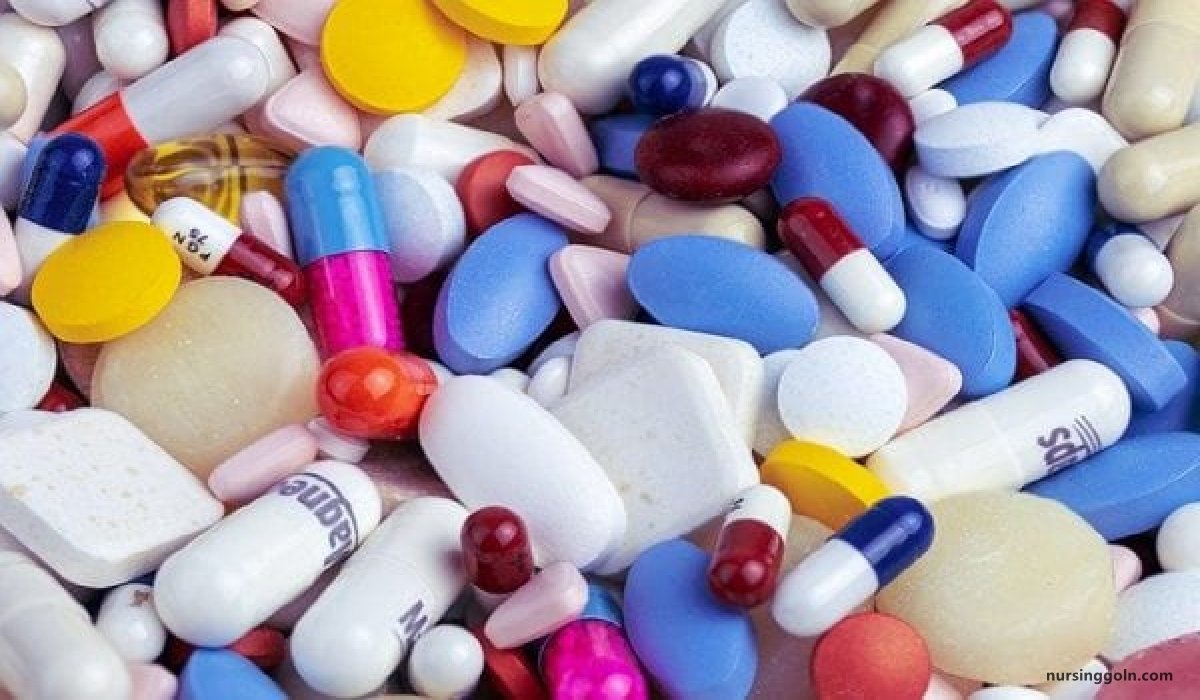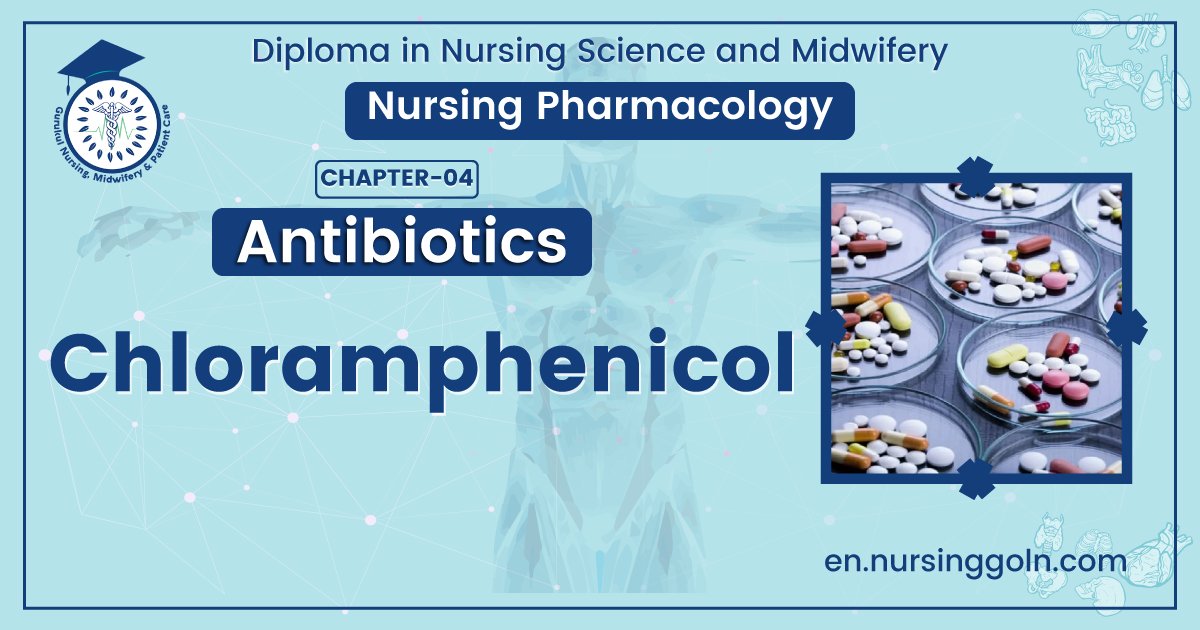Concept of Chloramphenicol – This book covers the entire syllabus of “Pharmacology” prescribed by BNMC- for a diploma in nursing science & midwifery students. We tried to accommodate the latest information and topics. This book is an examination set up according to the teachers’ lectures and examination questions.
At the end of the book, previous questions are given. We hope in touch with the book students’ knowledge will be upgraded and flourish. The unique way of presentation may make your reading of the book a pleasurable experience.

Concept of Chloramphenicol
Chloramphenicol is a nitrobenzene moiety and is a derivative of Dichloroacetic acid.
Source: Streptomyces venezuelae
Mechanism of action of Chloramphenicol:
Chloramphenicol binds reversibly to the bacterial 50S ribosomal subunit
↓
Inhibition of ribosomal peptidyl-transferase
↓
Interaction between peptidyl transferase and its amino acid substrate on 50 S ribosomal subunit cannot occur
↓
Peptide bond formation is inhibited
Reversible inhibition of protein synthesis in bacteria
Pharmacokinetics of chloramphenicol
Pharmacokinetics of chloramphenicol
1. Routes of administration: oral, topical
2. Absorption: Completely absorbed from the GIT
3. Distribution: Throughout the body tissue, CSF
4. Plasma half-life: 4 hours
5. Metabolism: Liver (glucoronide conjugation)
6. Excretion: Urine.

Antibacterial spectrum
Chloramphenicol is active against many types of microorganisms including chlamydiae, rickettsiae, spirochetes, and anaerobes. The drug is primarily bacteriostatic, but depending on the dose and organism, it may be bactericidal.
Resistance
Resistance is conferred by the presence of enzymes that inactivate chloramphenicol. Other mechanisms include decreased ability to penetrate the organism and ribosomal binding site alterations.

Indication of Chloramphenicol:
1. Typhoid and paratyphoid fever (enteric fever).
2. Bacterial meningitis caused by H. influenzae, Strep. pneumonae, N. meningitides. Rickettsial disease: Typhus, R.M.S fever.
3. Plague.
4. Anaerobic bacterial infections (with penicillin): Brain abscess, intra-abdominal or pelvic abscess.
5. Urinary tract infection (UTI)
6. Brucellosis
7. Ocular infections (bacterial conjunctivitis)
8. Lymphogranuloma venerum
9. Psittacosis
Adverse effect of Chloramphenicol
1. Bone marrow depression: two types –
➤Dose dependent (reversible): Pancytopenia.
➤ Idiosyncratic (not dose related: irreversible): foetal aplastic anaemia.
2. Gray baby syndrome.
3. Peripheral neuritis: occurs in prolong use of drugs.
4. Hypersensitivity reaction:
5. Macular or vesicular skin rashes
6. Fever
7. Angioedema

Gray Baby Syndrome
Neonates have a low capacity to glucuronidate the antibiotic, and they have underdeveloped renal function. Therefore, neonates have a decreased ability to excrete the drug, which accumulates to levels that interfere with the function of mitochondrial ribosomes. This leads to poor feeding, depressed breathing, cardiovascular collapse, cyanosis (hence the term “gray baby”), and death. Adults who have received very high doses of the drug can also exhibit this toxicity.
Drug interactions:
Chloramphenicol inhibits some of the hepatic mixed-function oxidases and, thus, blocks the metabolism of drugs such as warfarin and phenytoin, thereby elevating their concentrations and potentiating their effects.
Read more:
